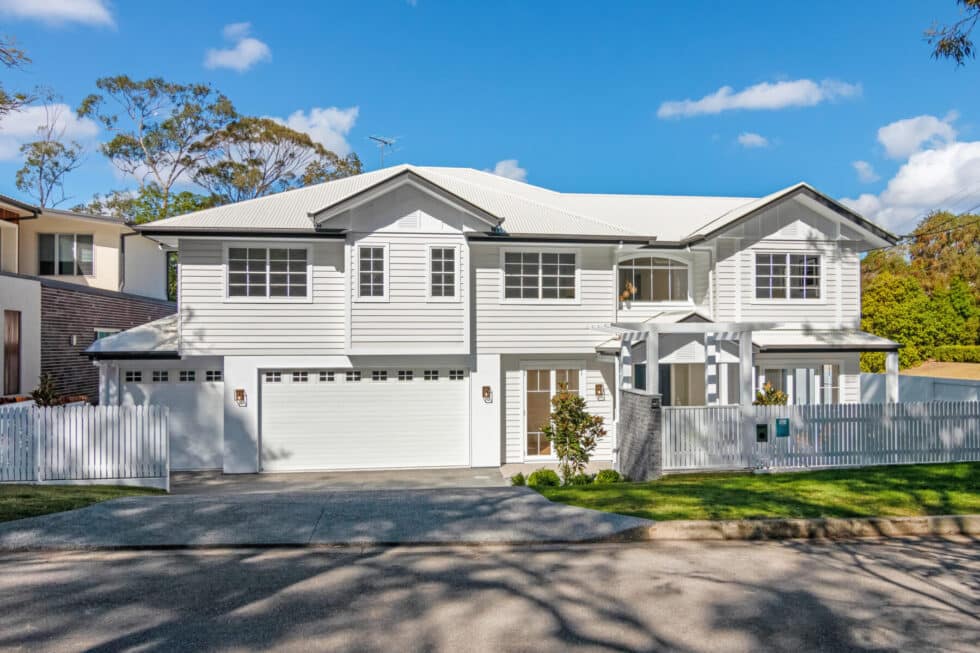Sustainable homes have slowly been becoming an indispensable part of the process and outcome of custom luxury homes, and for good reason! Having an environmental conscience is more important than ever in order to provide a sustainable future, and to avoid environmental damage.
It’s critical for custom home builders to understand and be invested in sustainable housing, not just as an afterthought, but as intrinsic to the whole building experience and process. There are some surprisingly simple ecological systems and building philosophies that make sustainability much easier, that all good designers and builders should be adopting.
These include:
- optimising the use of sunlight
- improving the air quality indoors
- thinking responsibly about land
- creating moisture-resistant, well insulated homes
- using building materials that make use of the most natural and widely available resources that our incredible earth provides.
Sunlight is a natural sustainable resource that South-East Queensland has more than enough of
There’s no better place than Brisbane to be thinking about sustainable living – our city is made for it! We are Australia’s most sustainable city, and with amazing initiatives in solar energy, not only is utilising the sun a way to be energy efficient, but it will help keep the bills lower too.
Transforming the sun into energy is not the only way to utilise that massive fiery ball high up in the sky. Incorporating skylights to harness this powerful source of light is one of the smartest ways to build a home. Generous windows accomplish a similar thing and if designed with care and attention, you will likely soon find that living in a house without an abundance of natural light will become incomprehensible!
Understanding and respecting the land you are building upon will have a long term impact for the sustainable good
Recent understandings of how vital land soil is to the well-being of all humans across the world are making good builders rethink how they practice. While this is being discovered at a grand scale around the world, the lessons learnt there can certainly be adapted for custom home design.
This can be as simple as the orientation and positioning of the house – taking advantage of your surroundings so that your house can be heated by the sun and cooled by the breeze. At a landscaping level this might involve using indigenous plants, and types of trees in order to regulate the temperature of your house from the outside.
Planting a tree can be one of the most powerful and important acts that will have future generations thanking their ancestry.
Double glazing, window furnishings and insulation for sustainable temperature control
Double glazed windows, and window coverings are one of the best ways to prevent heat loss in the winter. However, it’s not the winter in Brisbane that we’re really worried about – keeping a house cool without becoming overly reliant on the air-conditioner is a real sustainable art.
Good insulation is one of the best ways to maintain temperature in the house (so your glazed windows and coverings won’t go to waste). Sealing gaps around doors and windows to prevent draughts will do you wonders in maintaining a cool house.
A sustainable designer should really come into their own though when understanding sun and breeze direction: getting the right shadings for whether a window is north, east, west or south facing, and maximising systems to utilise cool summer breezes will create a beautiful, eco friendly summer house.
Sustainable building materials reduce the impact on the environment and make your home unique.
It’s not possible to have zero impact on the environment when building, but you can significantly reduce it. The best strategy to reduce the impact is to simply seek out materials that aren’t new. It’s surprising how many materials can be reused if some attention and thought is given to the matter.
Using durable, low maintenance materials helps minimise the need for new materials and will contribute to a building’s longevity. When you have to use new materials, then choosing materials that don’t impact negatively on non-renewable resources, the natural environment or human health is the basic rule of thumb for sustainability.
The construction industry is somewhat notorious for its generation of waste, so when it comes to waste management the three “R”’s are helpful to consider: reduce, reuse recycle. This should be applied from the design right through to the construction phase.
Sustainable homes are not only good for the environment, but they will add to the richness of your everyday living, not to mention the future security of your beloved home!
